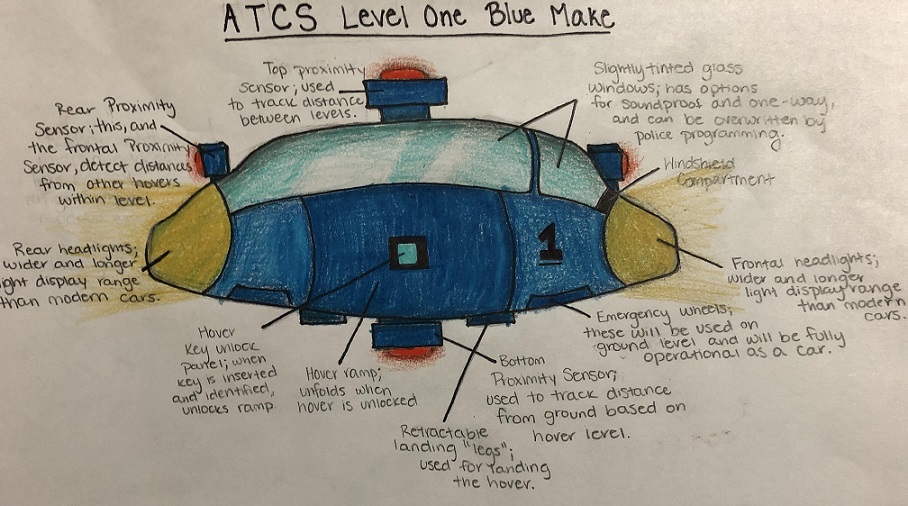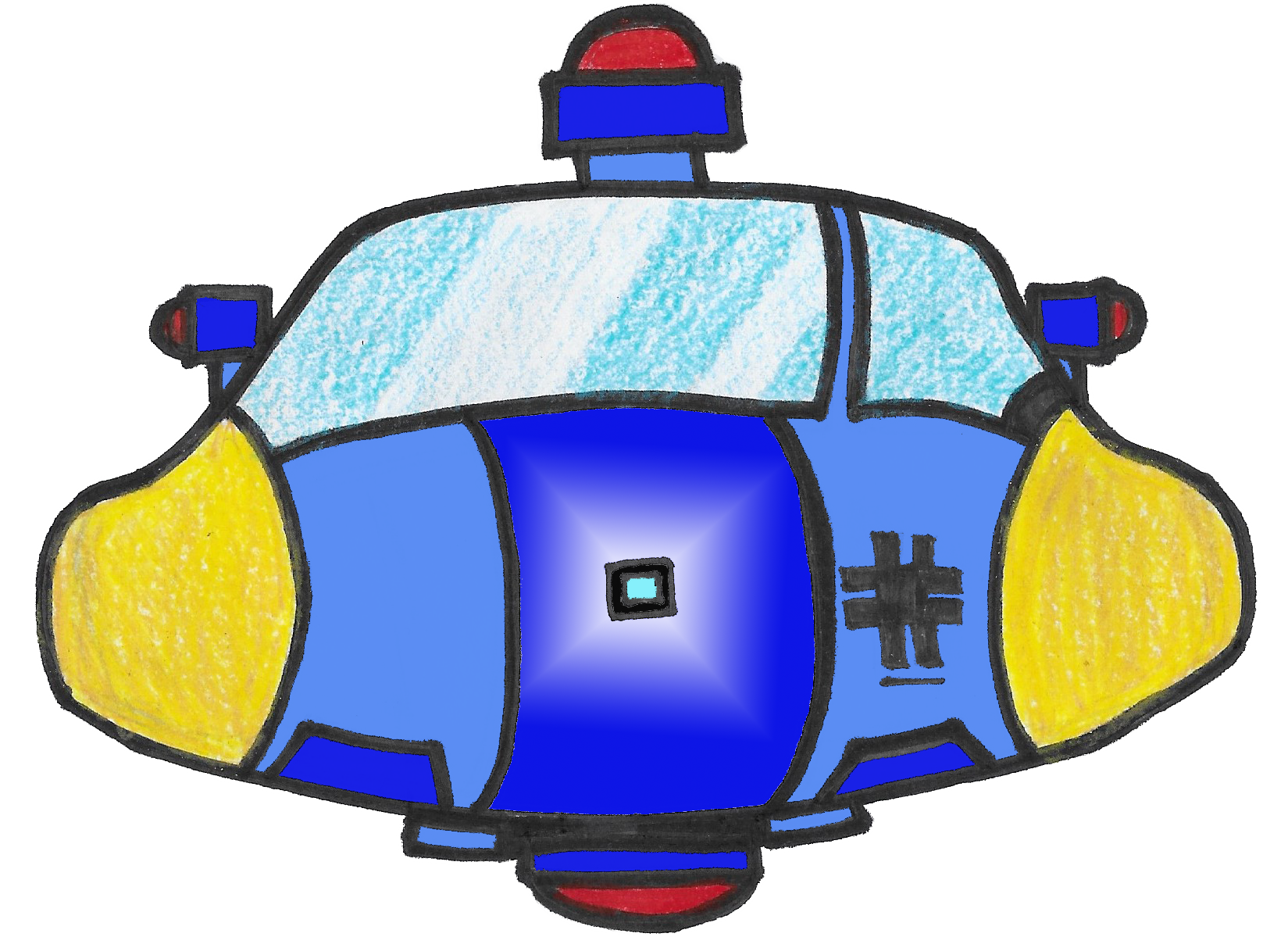
What you see above is a Level 1 Blue Make hover. This hover will only travel on level 1. There are 4 proximity sensors on the hover: the top, the bottom, the rear, and the front. Proximity sensors, or ultrasonic sensors, are devices used to measure the distance between the sensor and an object using ultrasonic waves. Click Here to learn more about proximity sensors. The primary use for the top and bottom sensors are to maintain the hover's level. This creates imaginary lanes between levels. The front and rear sensors are for detecting other hovers and preventing collisions.
Besides for the level programming, will everything else be the same for all hovers? Not exactly. Police hovers and emergency hovers are specially designed. They will have radar and tracking technology to locate any registered hover (more on the registration process in Real-Life Connections page). They will have built-in emergency lights and computers inside the hovers to document anything neccesary. They will have a higher speed capacity than normal hovers, and intense but not inconvenient security measures.
The hover has some similarities with the car, too; there are headlights, but they are much bigger and have a wider and longer range than cars. There is an emergency wheel in the hover, and tire compartments in the bottom. The windows in the hover are slightly tinted, and can be altered to be soundproof or one-way by police hovers.
It has other features too; the hover is self-driving by default, but can be easily contolled manually if need be. There is a ramp which opens ten seconds after a key is inserted and identified. It also has retractable "legs" which will stabilize to hover once it has landed. This is the simplest the hover needs to be; otherwise, it would be unnecessarily expensive to make. The proximity sensors identify the intensity of traffic, and they set the hover at a certain speed depending on that.
